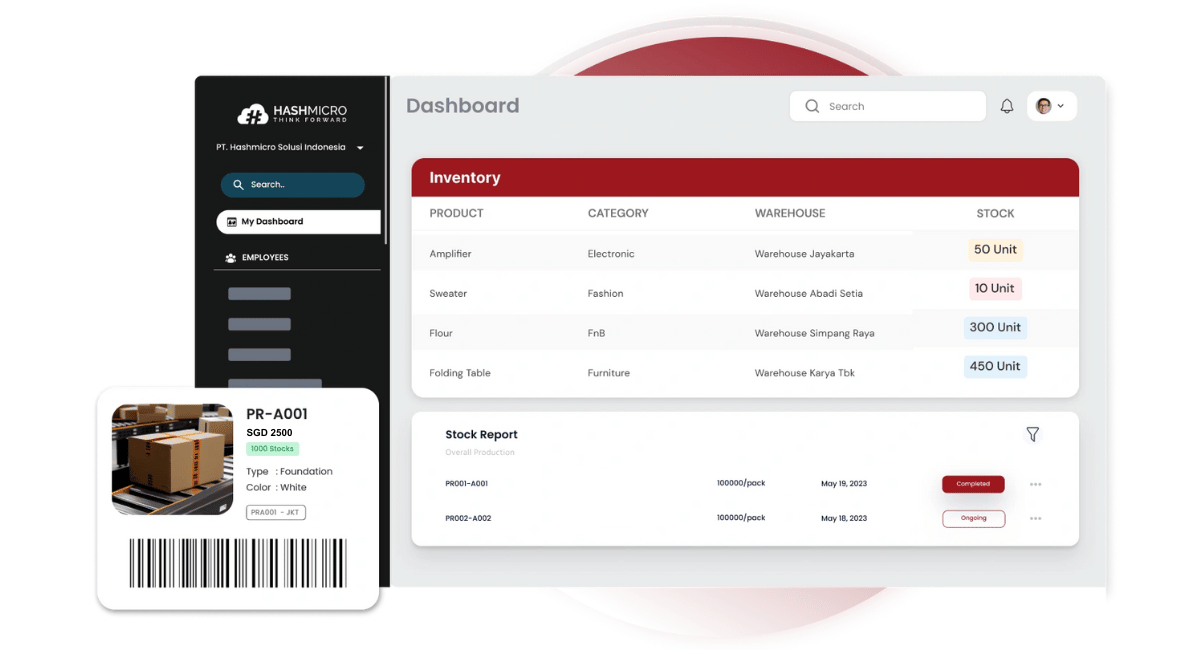Have you ever found yourself grappling with a surplus of products gathering dust in the warehouse or, conversely, facing the frustration of empty shelves and missed sales opportunities?
These scenarios are common problems Singaporeans face in inventory management, where both overstocks and understocks can significantly impact your business’s efficiency and profitability.
Table of Content:
Table of Content
Key Takeaways
|
Understanding the Risk of Overstocks and Understocks
Inventory management is a balancing act that requires precision and foresight. Overstocking and understocking are two sides of the same coin, each carrying its own challenges and implications for businesses.
Overstocking occurs when a business holds more stock than what is demanded in the market. This situation often leads to increased holding costs, including storage, insurance, and potential spoilage or obsolescence of products. The capital in excess inventory could have been used for other business opportunities, making overstocking costly.
On the other hand, understocking – insufficient inventory to meet demand – can be equally detrimental. It often results in lost sales, dissatisfied customers, and a tarnished brand reputation. In today’s fast-paced market, customers expect quick fulfillment of their orders, and failing to meet these expectations can drive them toward competitors.
The impact of these inventory issues extends beyond immediate financial implications. Overstocking can lead to a cluttered warehouse, making it difficult to manage and organize inventory efficiently.
In contrast, understocking can strain your supply chain, as hurried orders to replenish stock often come with expedited shipping costs and the risk of supplier unreliability.
In essence, maintaining an optimal inventory level—enough to meet customer demand but not so much that it incurs excessive costs—is crucial for the smooth operation and profitability of your business.
Key Causes and Effects of Inventory Mismanagement
Effective inventory management is a critical component of a successful business, yet mismanagement is all too common. Understanding the key causes and their effects is essential to prevent the pitfalls of overstocking and understocking.
Poor Demand Forecasting: Inaccurate demand predictions primarily cause inventory mismanagement. Overestimating demand leads to overstocks while underestimating results in understocks. The effects are felt through cash flow constraints, lost sales, and decreased customer satisfaction.
Inefficient Inventory Tracking: Lack of real-time inventory tracking can result in stock discrepancies between recorded and actual stock levels. This inefficiency often leads to overstocking due to redundant ordering or understocking due to unawareness of low stock levels.
Inadequate Supplier Management: Dependency on suppliers and their reliability significantly affects inventory levels. Inconsistent lead times and supply chain disruptions can leave businesses with excess inventory or scrambling to meet demand.
Market Trends Ignorance: Not staying attuned to market trends can lead to overstocking and understocking. Seasonal demand, changing consumer preferences, and economic shifts play crucial roles in inventory management.
Technological Limitations: Lack of or outdated inventory management technology can hinder accurate stock monitoring and forecasting, leading to inventory imbalance.
The effects of inventory mismanagement are far-reaching. Financial strain due to tied-up capital in overstocks or lost revenue from understocks is just the beginning. Long-term effects include damage to brand reputation, strained supplier relationships, and even operational inefficiencies.
Understanding these causes is the first step toward developing more effective inventory management strategies.
Ready to revolutionize your inventory management and boost your operational efficiency? Click the banner below to explore HashMicro’s pricing scheme!
Strategies for Effective Inventory Control in Business
Adopting robust strategies for inventory control is essential to avoid the pitfalls of overstocks and understocks. Here’s how you can keep your inventory in check:
Implement Advanced Inventory Management Software: Utilize sophisticated tools like HashMicro’s inventory management software. These systems offer real-time tracking, automated reordering, and accurate demand forecasting, ensuring you always have the right stock levels.
Regular Inventory Audits: Conduct regular audits to verify the actual stock against recorded levels. This practice helps identify discrepancies early and take corrective actions.
Supplier Relationship Management: Develop strong relationships with suppliers to ensure reliable lead times and flexible supply terms. This approach can buffer against supply chain disruptions.
Responsive Demand Forecasting: Employ predictive analytics to accurately anticipate market trends and customer demands. You can proactively adjust inventory levels by analyzing historical sales data and market conditions.
Lean Inventory Practices: Adopt a lean inventory approach, keeping stock levels minimal yet sufficient to meet demand. This method reduces holding costs and increases inventory turnover.
With inventory management software, these strategies become more manageable and effective. The software’s intuitive interface and advanced features streamline inventory processes, providing insightful data that aid in making informed decisions.
By leveraging such a tool, you can significantly reduce the chances of overstocking and understocking, enhancing operational efficiency and customer satisfaction.
Advanced Tools and Techniques for Preventing Overstock and Understock
In the realm of inventory management, the ability to accurately forecast demand is crucial. Here are some advanced tools and techniques that can significantly enhance your forecasting abilities:
Data Analytics and Machine Learning: Utilizing big data analytics and machine learning algorithms can vastly improve demand forecasting accuracy. These technologies analyze large volumes of data to identify patterns and trends, offering predictive insights.
Integrated ERP Systems: Systems like HashMicro’s ERP software provide a unified view of operations, including inventory, sales, and customer data. This integration allows for more accurate and holistic forecasting.
Seasonal Trend Analysis: Leveraging historical sales data to analyze seasonal trends and fluctuations helps prepare for period-specific demands, reducing the risks of understocks or overstocks during peak or off-peak seasons.
Collaborative Planning and Forecasting: Collaborating with suppliers, customers, and internal teams can provide a more comprehensive view of the demand landscape. This collaborative approach ensures all stakeholders are aligned and informed.
Customizable Forecasting Models: Utilizing software that offers customizable forecasting models allows businesses to tailor their demand predictions according to specific market conditions and business needs.
HashMicro’s inventory management software incorporates these advanced forecasting tools, ensuring that your business stays ahead of demand curves. You can optimize inventory levels, reduce costs, and improve customer service by leveraging such sophisticated techniques.
Conclusion
In conclusion, the challenges of overstocks and understocks in inventory management are significant but not unbeatable. Businesses can maintain optimal inventory levels by understanding the causes and effects of inventory mismanagement and implementing effective control strategies.
Remember, efficient inventory management is not just about avoiding costs associated with overstocking and understocking; it’s about creating a responsive, agile, and customer-centric supply chain. As your business grows and market dynamics evolve, the agility provided by effective inventory management becomes invaluable.
If you’re ready to take control of your inventory challenges and propel your business toward greater efficiency and profitability, consider exploring HashMicro’s inventory management software.
Their expertise and advanced software capabilities could be the key to unlocking your business’s full potential. Request a free demo today to see how HashMicro can transform your inventory management practices.
FAQ About Overstocks and Understocks
-
How can I reduce overstocking in my business?
Implement real-time inventory tracking and use predictive analytics for accurate demand forecasting. Solutions like HashMicro’s inventory management software can significantly aid in this.
-
What are the key risks of understocking?
Understocking can lead to lost sales, customer dissatisfaction, and a negative impact on your brand reputation.
-
Can technology really improve my inventory management?
Absolutely. Advanced tools like HashMicro’s inventory management software offer comprehensive features for tracking, forecasting, and managing inventory more effectively.
-
How often should I conduct inventory audits?
Regular audits, at least quarterly, are recommended to ensure data accuracy and to identify any discrepancies early.
-
What is the first step towards better inventory management?
The first step is to assess your current inventory processes, understand your challenges, and then consider implementing a robust inventory management system like HashMicro’s.



























































